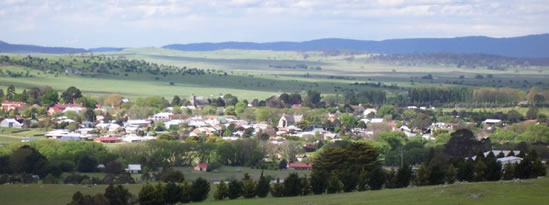Regional Snapshot - Communities
Resilient Communities – Creating the Future
“The future is not somewhere we are going, it is something we are creating…”
Professor Ian Lowe
Climate change presents enormous challenges but also opportunities to live and work in ways that are more harmonious with our environment and far more sustainable than in the past.
The ACR has long benefited from the creativity, hard work, commitment and involvement of individuals and communities across the Region. We are the third largest region in New South Wales (NSW) with a capital city – Canberra – in close proximity. We also have wonderful educational facilities - schools, colleges, universities and community organisations – supporting life-long learning. This kind of active community engagement, learning and the development of creative solutions are key to building adaptive and resilient communities of the future.
In the Australian Capital Region (ACR) climate variability, land use, and population growth are three key drivers of change:
- Weather and climate impacts on the environment and communities and climatic variation influences the availability of resources such as water and the incidence of extreme events.
- Land use change resulting from changes such as new housing, industry and infrastructure development, consumes resources and generates waste.
- Population growth and changing demographics strongly influence demand for housing, infrastructure, and goods and services with resulting impacts on the environment.
These in turn influence overall levels of production and consumption which then place further pressure on the environment, infrastructure and livelihoods.
However, these key challenges for the ACR, if managed well, also provide us with opportunities to learn and build vibrant communities and a more sustainable future.

Resilient Communities – Bungendore
Photo: Palerang Shire Council
Meeting the challenge
The ACR has a role to play in reducing greenhouse gas emissions, but it is also important that we adapt to future climate-based risks. To do this, we must understand these risks and impacts on the environment, industries, communities and infrastructure. Adapting to climate variability will need to occur at the national, regional and local level. Councils within the ACR will play a pivotal role in leading and providing direction on adaption, and working with communities, businesses and non-governmental organisations to develop resilient communities.
Coordinated and cooperative Regional planning, strategies and action are needed to tackle Regional issues such as appropriate planning and investment in infrastructure to support local industries and communities. One recent example is in Bombala where developments in the forestry sector and associated timber harvesting and transport will impact on Council’s road network. With no contribution from the forestry industry for road upgrades or maintenance, Council carries the financial burden of this infrastructure, when steps could have been taken at the outset to better plan for and fund the infrastructure.1
Regional partnerships with organisations, such as the Regional Development Australia Southern Inland Region, will help coordinate Regional development initiatives, support regional strategic input into national programs, and promote effective engagement with local communities.2
Council Responses
Councils have a central role in actively planning and supporting communities in developing this more sustainable future. The new Community Strategic Plans, in touch with and responsive to the wide range of social, cultural, economic and environmental values represented within any community, will be vitally important in setting strategic directions for the future.3
Councils can support community resilience and adaptation for the future through effective strategic planning and action. However, achieving this also requires genuine community participation in identifying issues and generating solutions. For example, the Jindabyne Action Plan, completed by the Snowy River Shire Council, grew out of issues that the community identified as important. Opportunities for collaboration were also created so that council and the community could work together to access Federal and State funding for infrastructure and town improvements.
Council actions to support the development of adaptive and resilient communities include:
- working in partnership with communities to plan and implement environmental and sustainability actions;
- integrating adaptation policies to climate variability and other challenges into Council’s planning processes;
- developing local and Regional policies that support transition and adaptation strategies towards more sustainable energy and other resource use;
- implementing Regional responses to large-scale infrastructure needs;
- using Regional approaches to environmental actions;
- working with State and Federal Governments to develop strategic solutions to the challenges of supporting new and existing large-scale industries; and
- implementing a Regional approach to applications for funding from the Commonwealth Government;
References and Footnotes
1 Bombala Council submission to Infrastructure Australia, 2008, http://www.infrastructureaustralia.gov.au/public_submissions/published/files/444_bombalacouncil_SUB.pdf
2 Regional Development Australia, 2008, http://www.infrastructure.gov.au/regional/publications/pdf/Regional_Development_Australia_min_
stmt_final_version_20Mar08.pdf
3 On 9 October 2009, new integrated planning and reporting procedures for NSW local councils were announced requiring development of new ten year Community Strategic Plans linked to State of the Environment reporting through Council Annual Reports (NSW Department of Local Government, Circular to Councils, 09-37, 14 October 2009).
